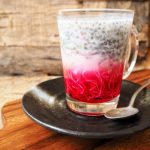Spray drying is a widely used industrial process for transforming liquid feedstock into dried particulate forms, commonly powders. It involves atomizing a liquid into droplets, which are then dried rapidly by contact with hot air. This process is employed across various industries, including food, pharmaceuticals, chemicals, and ceramics, to produce powders with specific properties such as particle size, shape, density, and flowability. Let’s delve into the intricacies of spray drying and its applications.
Principle of Spray Drying
At its core, spray drying operates on the principle of atomization and evaporation. The liquid feedstock is atomized into fine droplets using various techniques such as pressure nozzles, rotary atomizers, or pneumatic atomizers. These droplets are then introduced into a chamber where they come into contact with a stream of hot air. The heat causes rapid evaporation of the liquid, leaving behind dried particles that are collected at the bottom of the drying chamber.
Process Parameters
Several parameters influence the spray drying process and the properties of the resulting powder. These include:
- Inlet and outlet air temperatures: Higher temperatures can lead to faster drying but may also cause thermal degradation of sensitive materials.
- Feedstock composition and concentration: The chemical composition and concentration of the liquid feedstock affect its drying behavior and the properties of the powder.
- Atomization method: Different atomization techniques produce droplets of varying sizes, which influence the particle size distribution of the final powder.
- Airflow rate and velocity: These parameters affect the residence time of the droplets in the drying chamber and thus the extent of drying.
Applications of Spray Drying
Spray drying finds extensive applications across diverse industries:
- Food Industry: It is used to produce powdered forms of various food products such as milk, coffee, and fruit juices, improving their shelf-life, solubility, and ease of handling.
- Pharmaceuticals: Spray drying is employed to produce dry powder formulations of drugs, vitamins, and other pharmaceutical products, enhancing their stability and bioavailability.
- Chemicals: In the chemical industry, spray drying is used to produce powdered forms of chemicals, detergents, and catalysts, facilitating handling, storage, and transportation.
- Ceramics: Spray drying is utilized to produce ceramic powders for manufacturing components such as tiles, insulators, and electronic devices, ensuring uniform particle size and composition.
Advantages of Spray Drying
Spray drying offers several advantages over other drying methods:
- Rapid drying: The rapid evaporation of droplets in hot air leads to quick drying times, making it suitable for heat-sensitive materials.
- Control over particle properties: The process allows precise control over the particle size, shape, and density of the powder, enabling customization for specific applications.
- High efficiency: Spray drying is a continuous process with high throughput, making it suitable for large-scale production.
- Reduced contamination: Since the drying occurs in a closed chamber, the risk of contamination from external sources is minimized.
Challenges and Considerations
Despite its advantages, spray drying also presents some challenges and considerations:
- Energy consumption: The process requires significant energy input to heat the drying air, making it less energy-efficient compared to other drying methods.
- Material handling: Certain materials may exhibit poor flow properties or may be prone to agglomeration during drying, requiring additional processing steps to ensure the desired powder characteristics.
- Equipment maintenance: Spray drying equipment requires regular maintenance to prevent clogging of nozzles or buildup of deposits, which can affect process efficiency and product quality.
Losses When Drying Food Materials
When spray drying liquid foods, such as fruit juices, dairy products, or vegetable extracts, various types of losses can occur throughout the process. Understanding these potential losses is crucial for optimizing efficiency and maximizing the yield of the spray drying operation. Here are some of those common losses and their sources.
1. Losses during Atomization
- Oversized Droplets: Some of the droplets generated during atomization may be larger than desired, leading to incomplete drying and loss of product.
- Uneven Droplet Size Distribution: Inefficient atomization can result in a wide range of droplet sizes, with larger droplets having a higher likelihood of incomplete drying and loss.
2. Losses during Drying
- Sticking and Fouling: Liquid foods with high sugar or protein content can be sticky and prone to fouling on the surfaces of the drying chamber, resulting in product loss.
- Caramelization or Maillard Reactions: High temperatures during drying can induce caramelization or Maillard reactions in certain liquid foods, leading to color changes and loss of flavor or nutritional value.
- Soluble Solid Losses: Some soluble solids may be lost during the drying process, affecting the composition and quality of the final powder.
3. Losses during Collection and Handling
- Dust Formation: Fine particles generated during drying may escape collection systems, resulting in dust formation and loss of product.
- Equipment Residues: Residues left in the drying chamber or on equipment surfaces may contribute to product losses if not properly recovered or recycled.
4. Losses due to Equipment Inefficiencies
- Poor Airflow Distribution: Non-uniform airflow within the drying chamber can lead to uneven drying and product losses.
- Equipment Downtime: Downtime for maintenance, cleaning, or equipment failures can lead to production losses and reduced overall efficiency.
5. Losses due to Material Properties
- Foaming: Some liquid foods may foam during atomization, leading to entrainment of air bubbles in the droplets and affecting drying efficiency.
- Viscosity: Viscous liquid foods may require higher energy input for atomization and drying, increasing the risk of product loss due to incomplete drying or fouling.
6. Losses due to Process Parameters
- Inappropriate Temperature and Humidity: Improper control of drying temperature and humidity can result in suboptimal drying conditions, leading to increased product losses.
- Residence Time: Insufficient residence time in the drying chamber may result in incomplete drying of droplets and higher moisture content in the final powder, increasing the risk of microbial growth and spoilage.
7. Losses during Packaging and Storage
- Moisture Absorption: Improper packaging or storage conditions can lead to moisture absorption by the powder, affecting its quality and shelf-life.
- Oxidation: Exposure to oxygen during packaging and storage can lead to oxidation of lipids or sensitive compounds in the liquid food, reducing its nutritional value and shelf-life.
To mitigate these losses, it’s essential to optimize process parameters, such as atomization conditions, drying temperature, airflow rate, and residence time, to ensure efficient drying while preserving the quality and yield of the final product. Additionally, proper equipment maintenance, cleaning procedures, and quality control measures can help minimize losses and ensure consistent production outcomes.
Recent Advances and Future Directions
Ongoing research in spray drying focuses on enhancing process efficiency, reducing energy consumption, and expanding its applicability to new materials and industries. Advances in nozzle design, process modeling, and control systems aim to improve product quality and consistency while reducing production costs. Additionally, there is growing interest in sustainable practices, such as using renewable energy sources and optimizing process parameters to minimize environmental impact.
Spray drying is a versatile and widely used process for producing powders with tailored properties across various industries. Its ability to efficiently transform liquid feedstock into dried particulate forms makes it indispensable for applications ranging from food and pharmaceuticals to chemicals and ceramics. While it offers numerous advantages, careful consideration of process parameters and potential challenges is essential to ensure optimal performance and product quality. As research and development efforts continue, the future of spray drying holds promise for further innovation and expansion into new frontiers of materials processing.


Leave a Reply